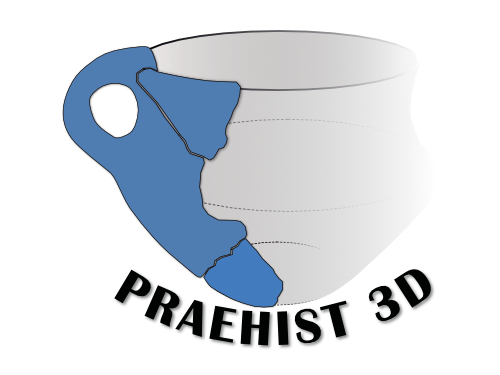Bones are processed in various steps into artifacts and tools. Frequently, unfinished or semifinished pieces of raw material can be found in archaeological assemblages. These semifinished products often have characteristic traces of processing, from which conclusions can be drawn on related finished products. A particularly typical form were metatarsus needed for needle production.
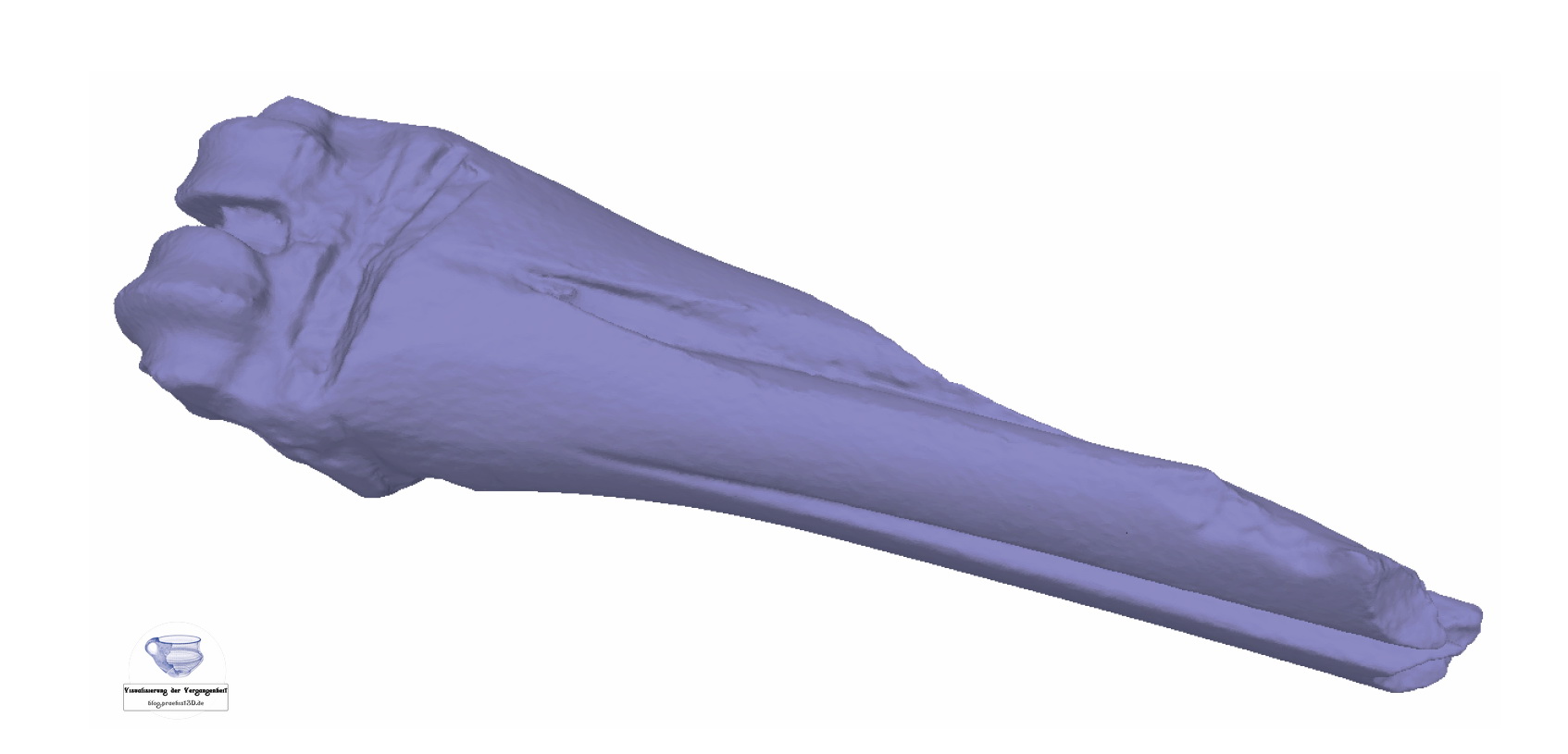
The Metatarsus presented here belongs to a Bronze Age excavation inventory and was recorded via photogrammetry by me for my master thesis. On it are the deep longitudinal incisions typical for the needle production, as well as traces of the begun separation of the epiphysis. The main sections divide the bone shaft into four separate compartments (clearly visible in the shaded view), which then each form the raw material for a needle. In the present case, half of the shaft and one end have already been roughly removed.
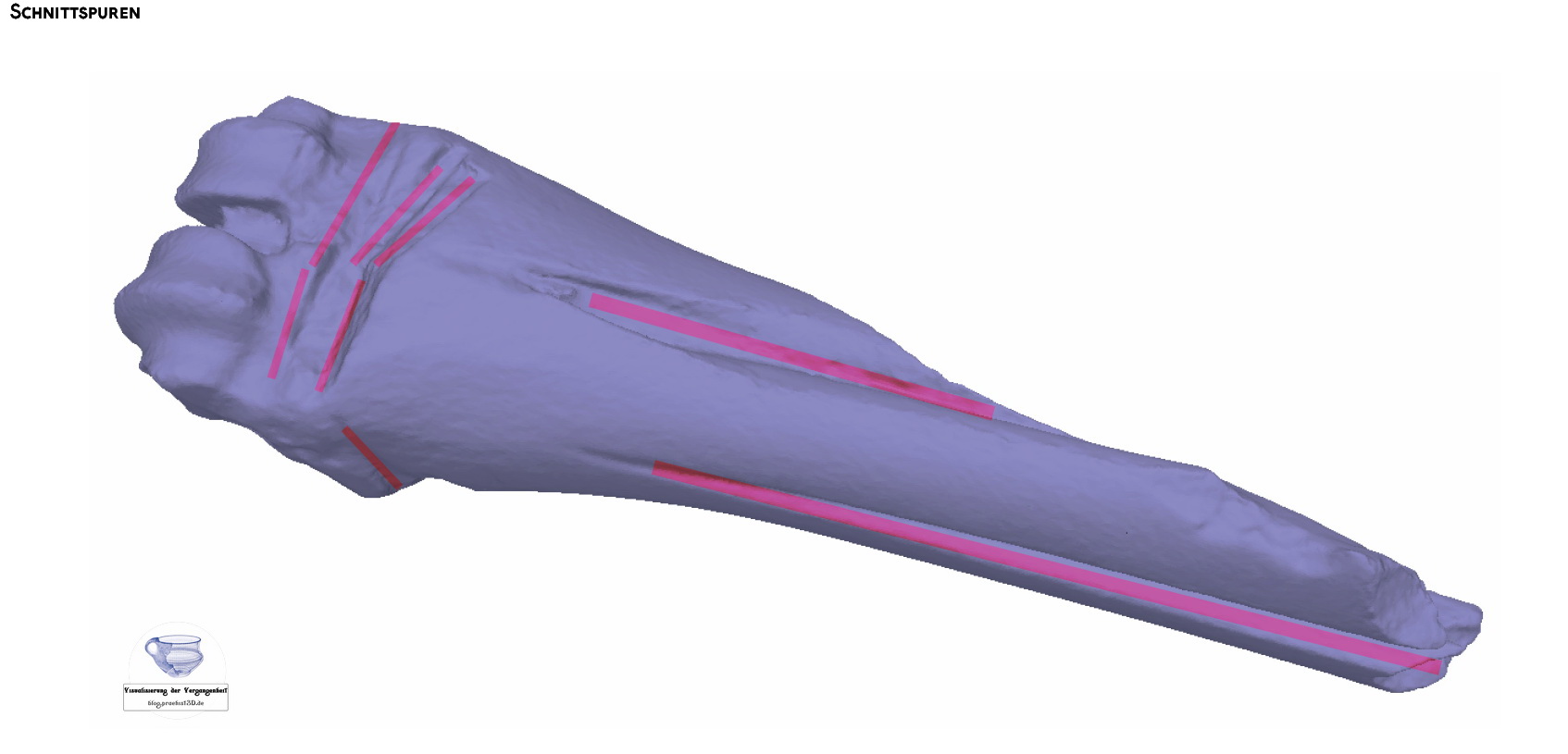
Based on a 3D scan, not only detailed illustrations of the processing traces can be produced, but also statements about the hypothetical maximum recoverable needle size/number can be made. The maximum achievable amount of material can be calculated and visualized thanks to some placeholders within a 3D program. So, it can be estimated that from the remaining material in the bone, two more needles with a maximum length of 8 cm and 5 mm in diameter could be produced.
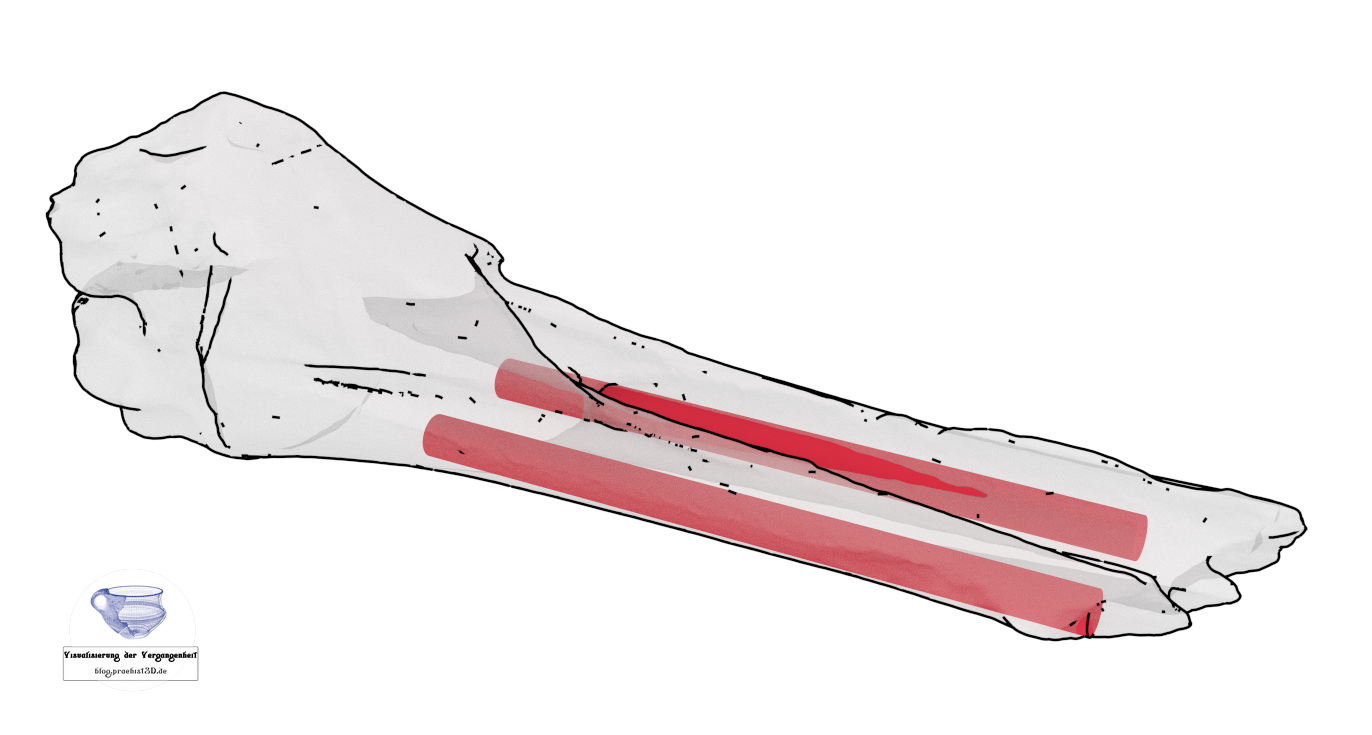
A tracing of the cutting and hacking marks, as well as the tool used, is possible on the 3D model. In special cases, sometimes the sequence of individual tracks can be reconstructed in detail. These measurements can easily be done in free software such as Blender, which has been given a very suitable volume determination program with the 3D Print Toolbox. Only the correct scaling of the object and the correct units of measurement should be considered.
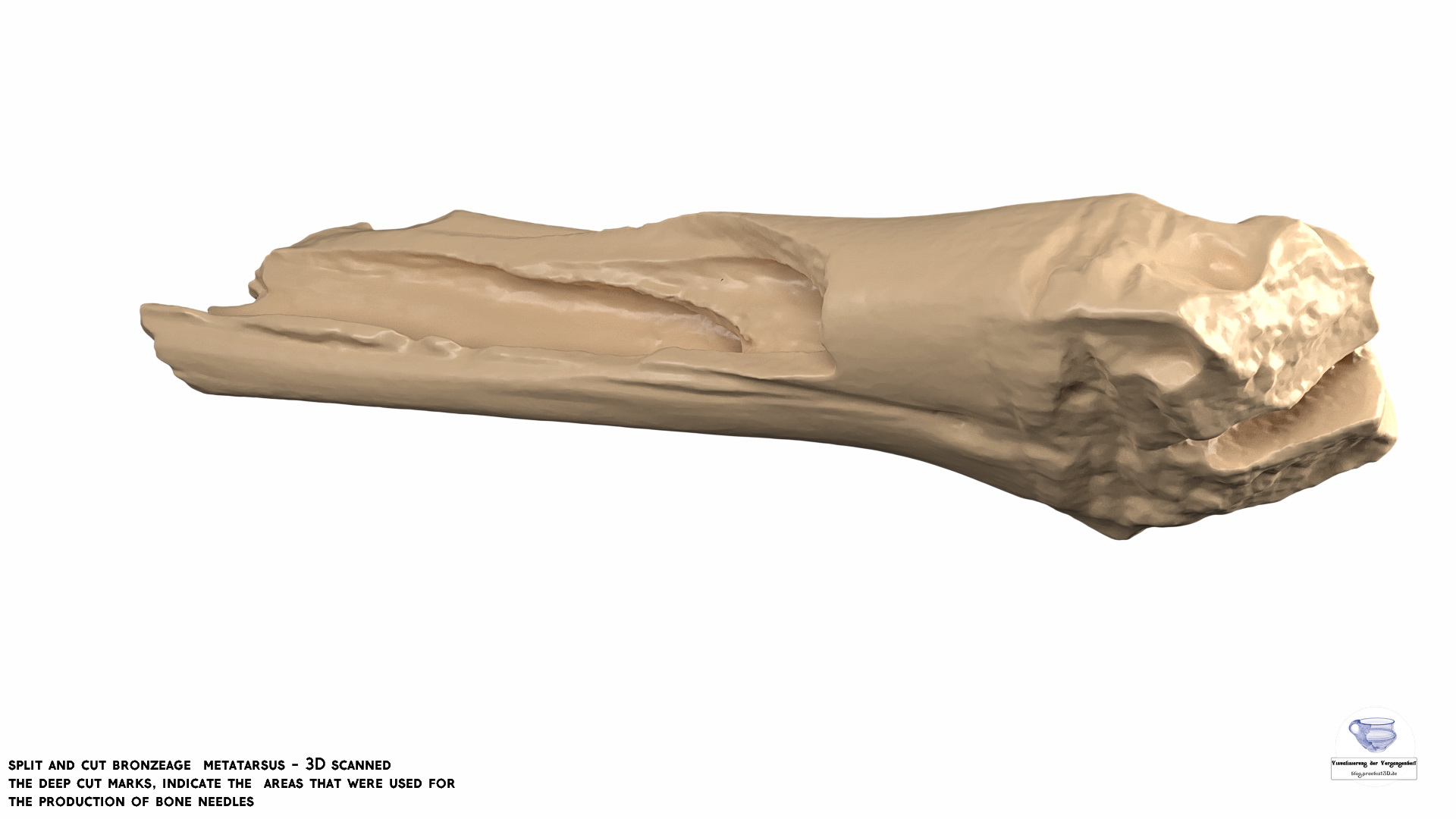
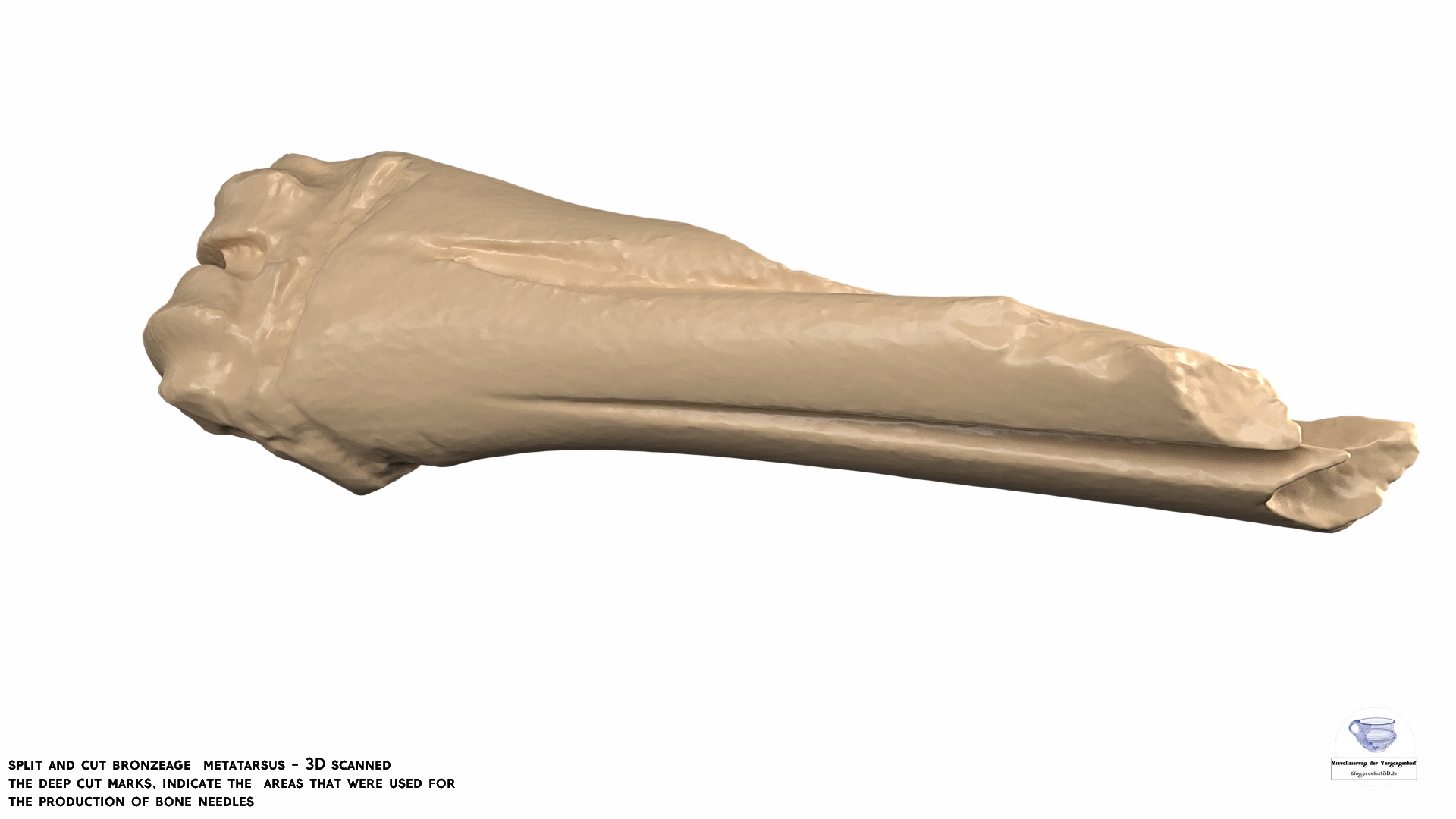
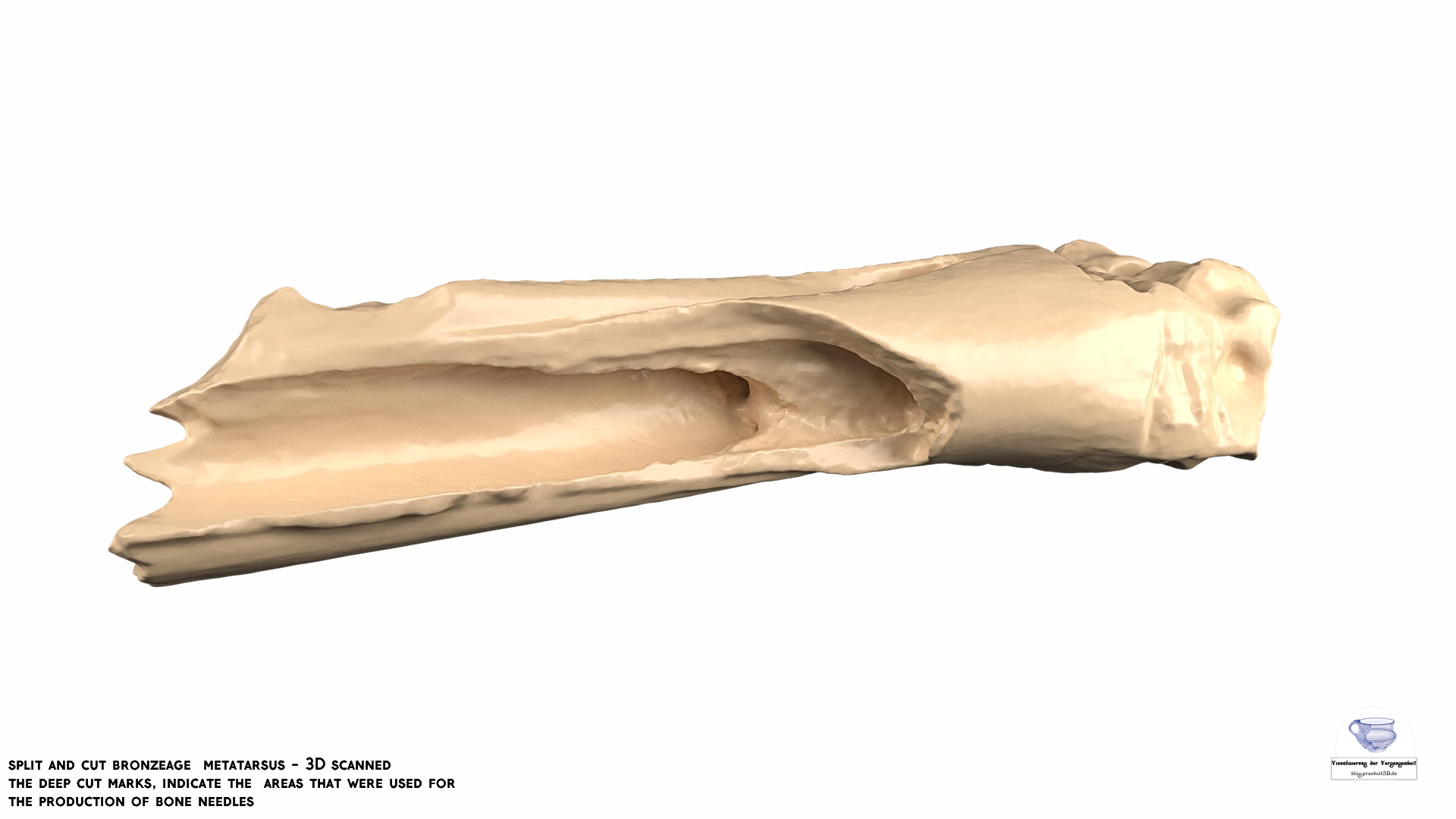
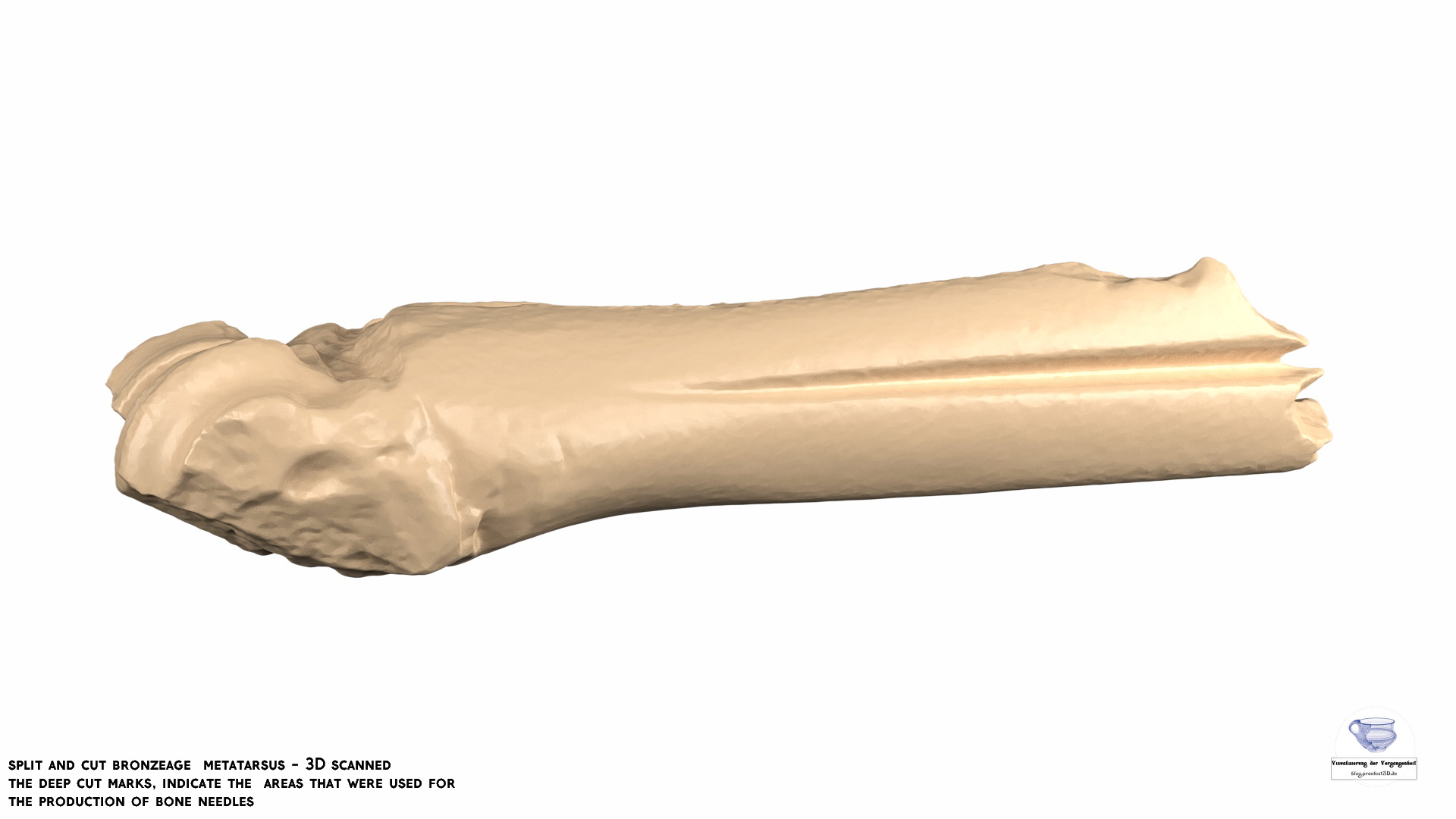
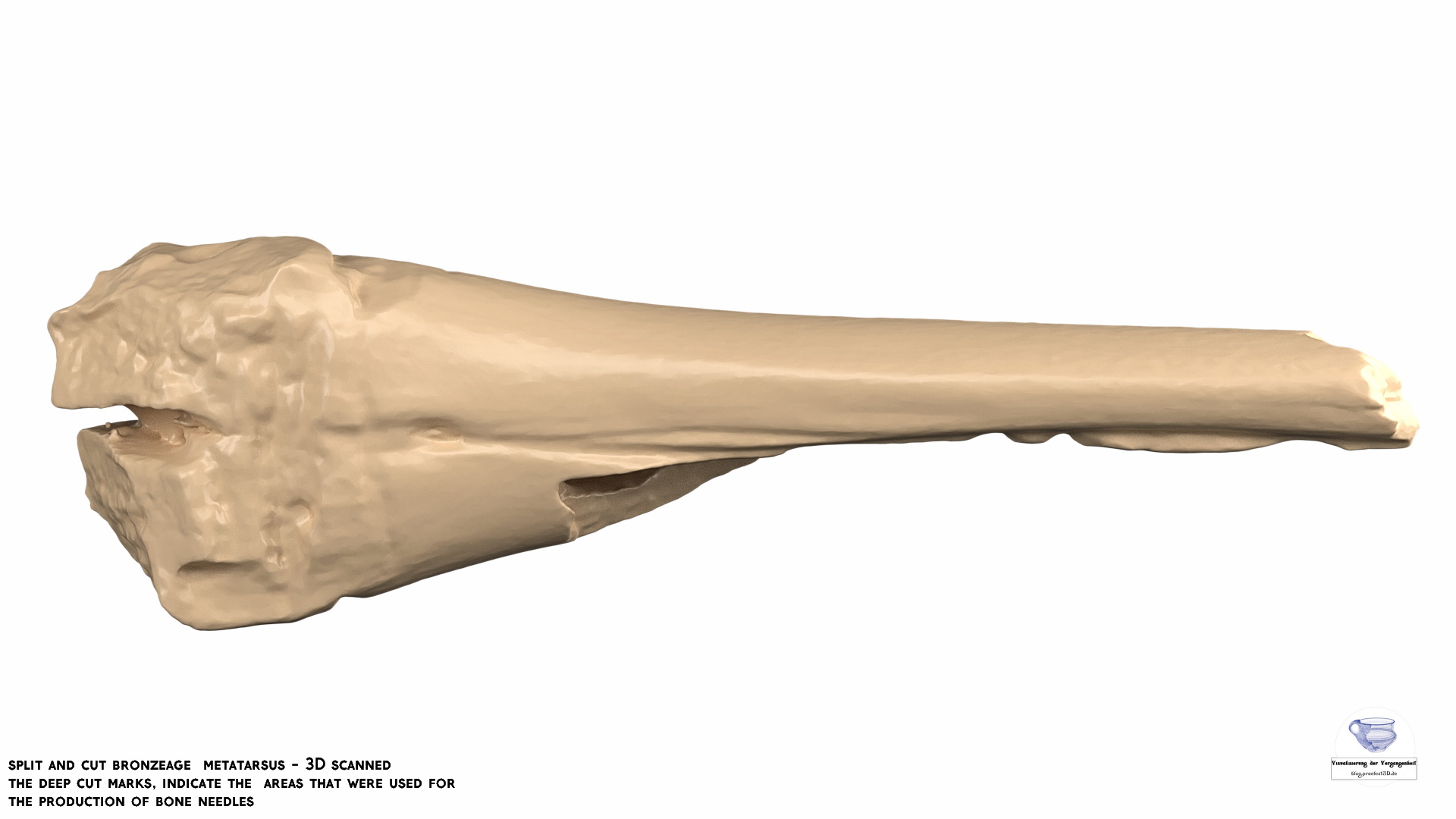
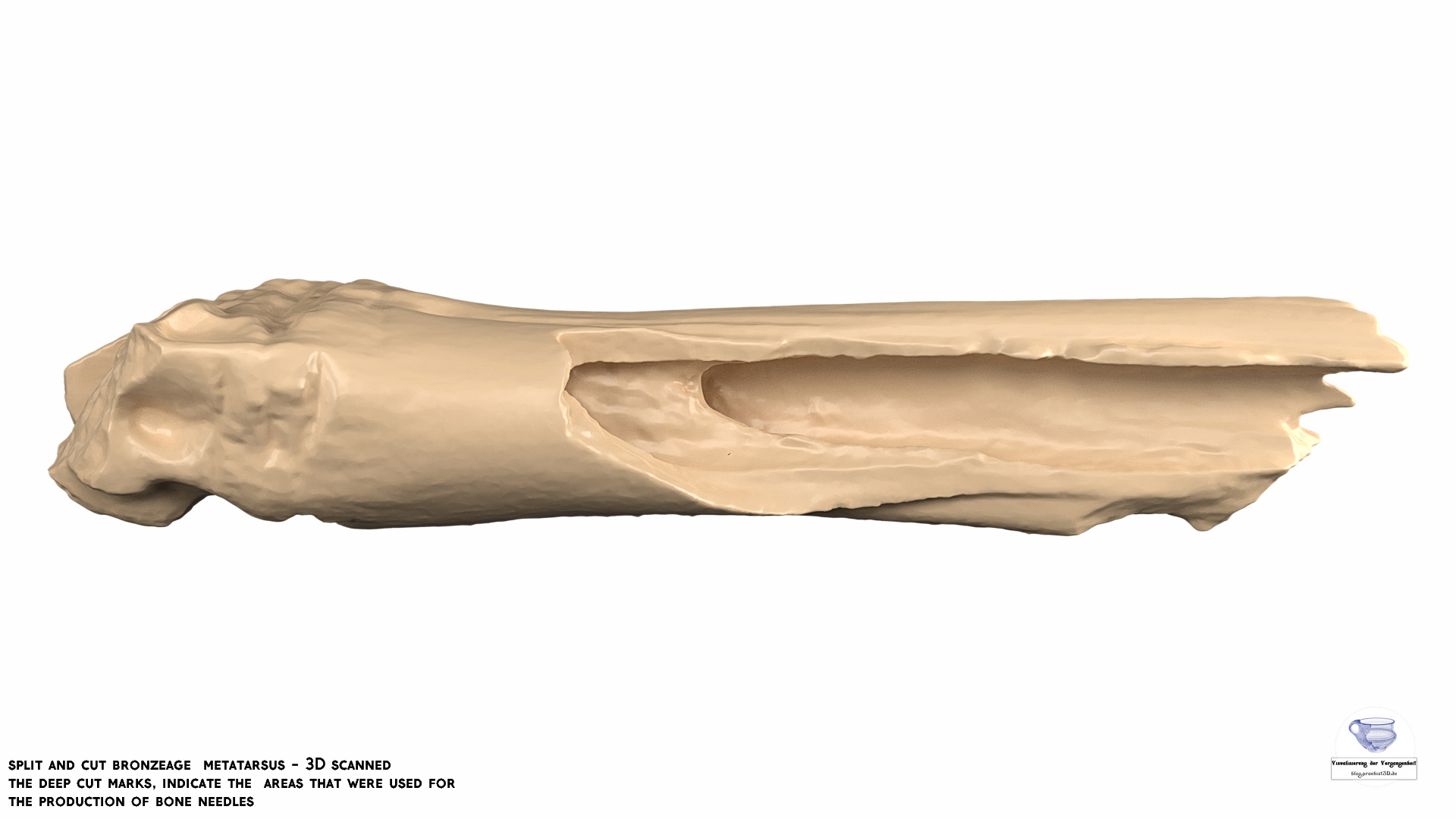
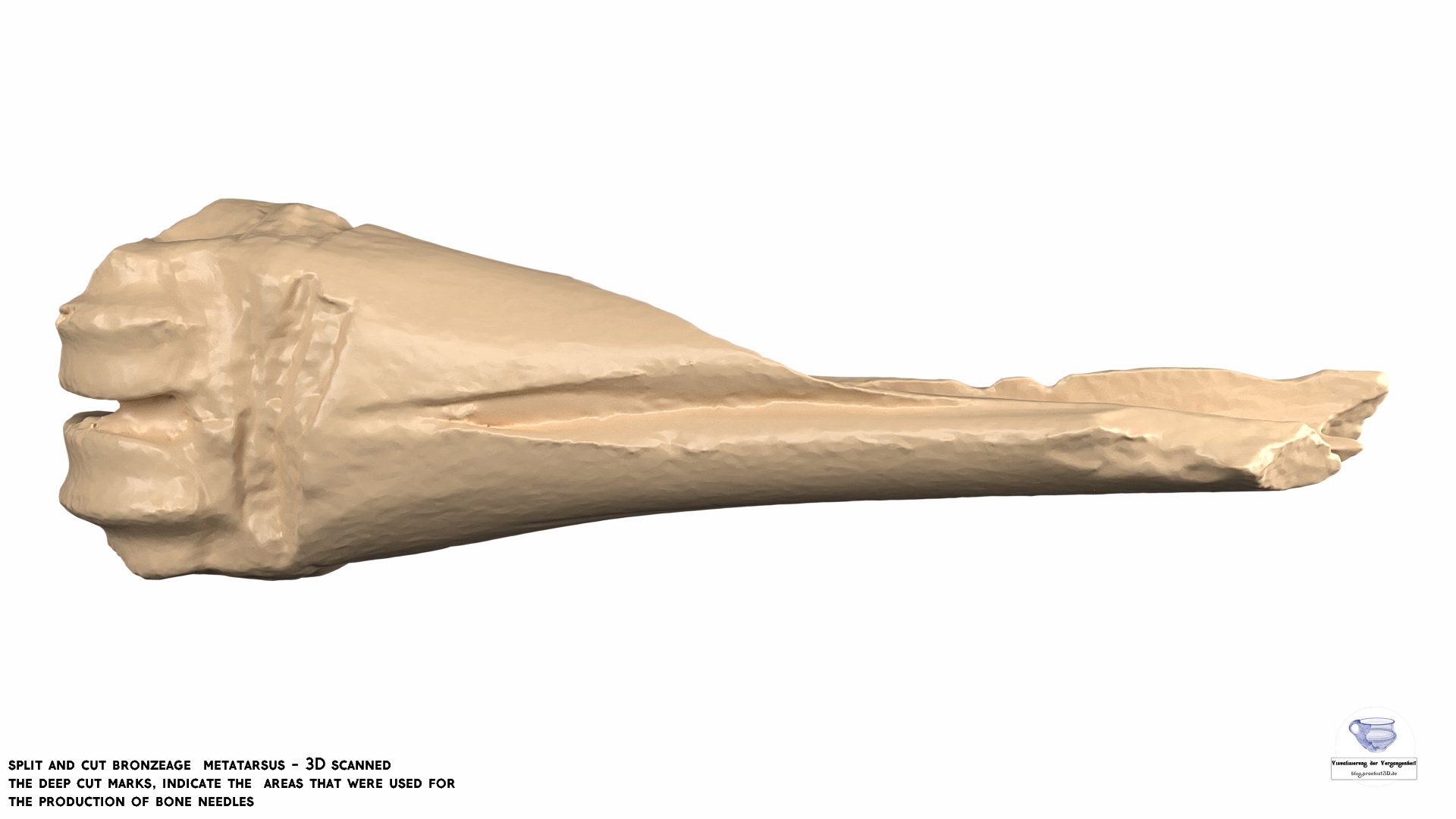
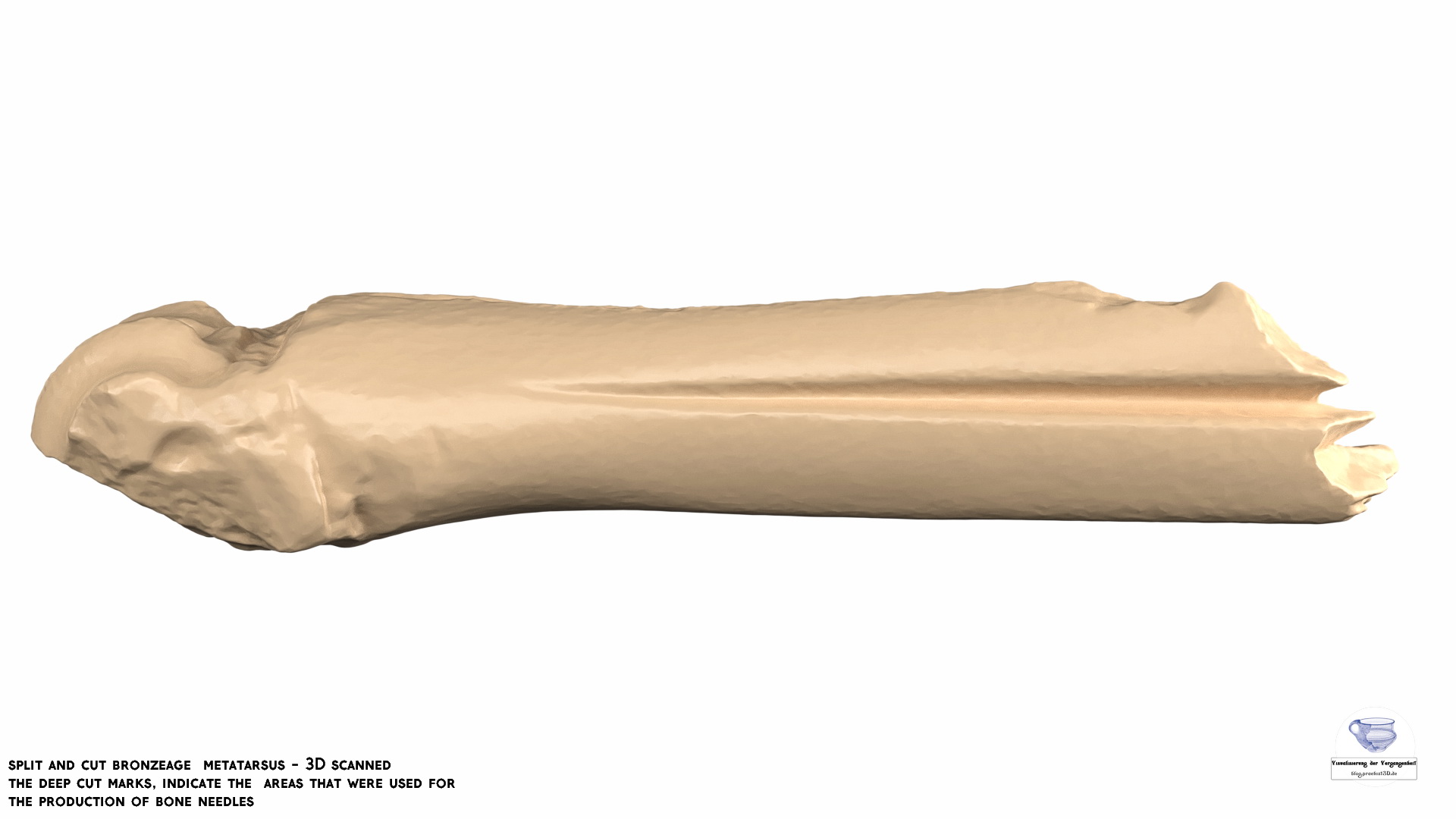
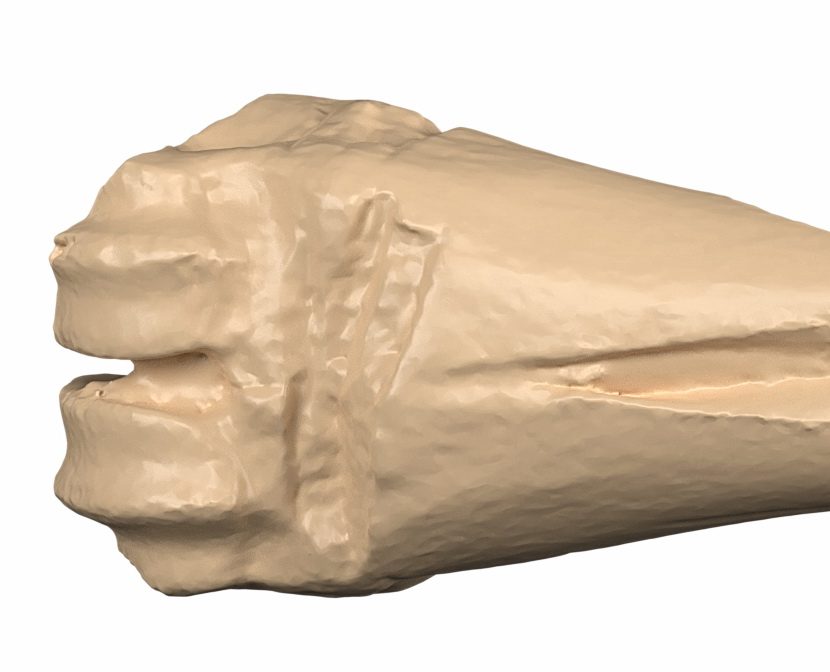





The 3D model presented here was created using Agisoft Photoscan. Forty-seven pictures were used. The total calculation time was about 2 h. The subsequent render images were made with Blender 3D. Where for the black / white / red figure, the freestyle module for the indicated vector drawing was used.
Questions, comments or criticism? Just leave a comment.
Are you interested in 3D scans, prints, reconstructions, workshops or questions?
